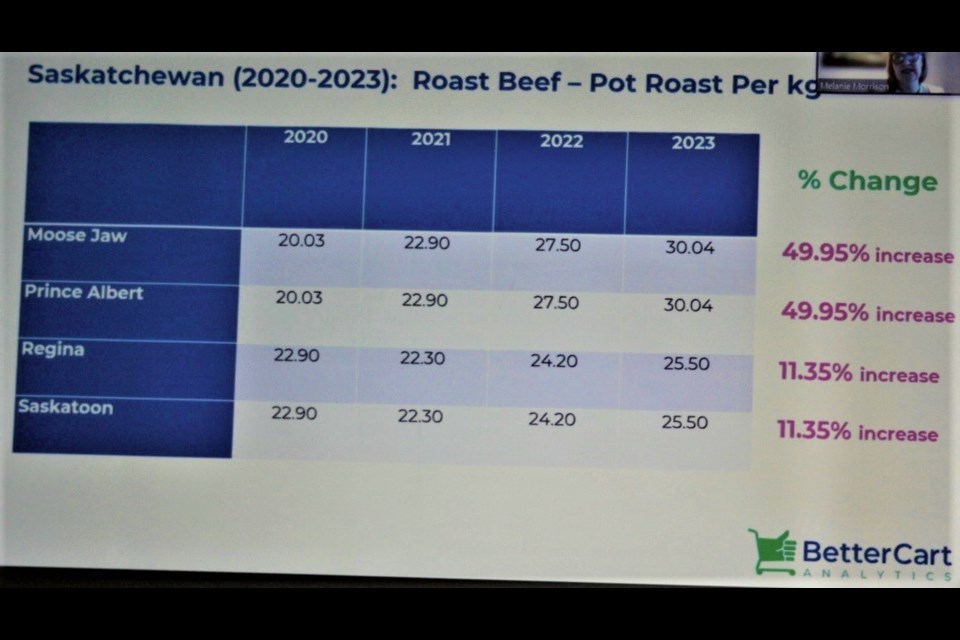Ranchers have lost one-third of their share in the retail beef dollar since 1970.
A dissection of who shares the retail dollar indicated the beef producer received 64 per cent of the dollar in 1970, slipping to 41 per cent by 2022.
“The packer share hasn’t changed much” at 1.2 per cent,” said Dr Melanie Morrison, founder of Saskatoon-based BetterCart Analytics.
The retailer doubled market share at the produce’s expense, going from 23 per cent in 1970 to 48 per cent last year.
Morrison is working with the Saskatchewan Stock Growers Association using her artificial intelligence technology to create price transparency.
Her operation focuses on crunching price data from e-commerce sites of major Canadian retailers in 42 Canadian cities. She develops price comparison charts from 353,000 data points on local, regional and national levels.
The BetterCart data showed “huge price differences” in price increases within regional markets.
In Saskatchewan, pot roast per kilogram increases between 2020 and 2023 were from just under 50 per cent in Moose Jaw and Prince Albert. Yet in Regina and Saskatoon pot roast increased by just over 11 per cent.
In Alberta, Calgary and Edmonton saw increases around 50 per cent but Red Deer pot roast only went up 9.8 per cent.
The cities of Kamloops, Kelowna, Surrey and Vancouver in B.C. saw the price increase 10.35 per cent.
Abbotsford, Nanaimo and Victoria had just under 50 per cent price hikes while Richmond came in at 27.4 per cent.
In Manitoba, Brandon and Winnipeg saw near 50 per cent hikes.
Her data analysis showed variance in 2022 regular ground beef prices from a high of $1.56 per 100 grams in Quebec to a low of $1.18 in Alberta and Saskatchewan.
Ron Walter can be reached at [email protected]




